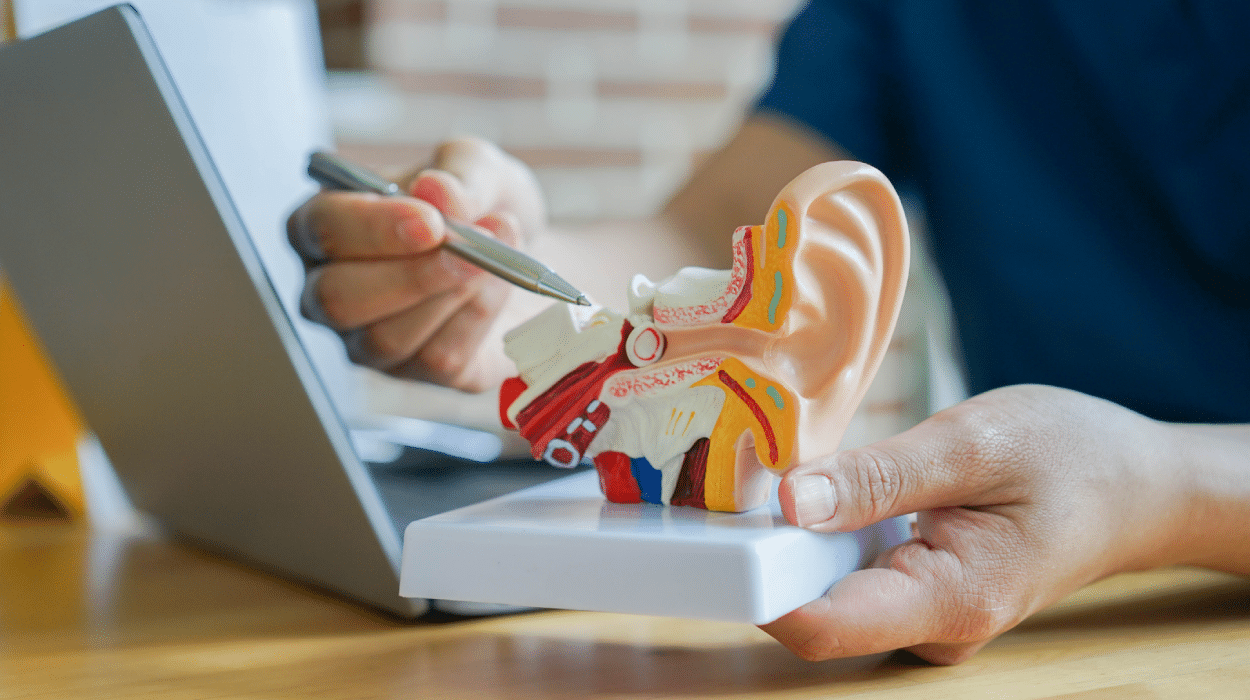Ear Problems
- Home
- Ear Problems

There are many causes of hearing loss. They can broadly be divided into conductive and sensorineural causes. Sometimes, both may be present.
Conductive causes can be something relatively simple to manage (eg. ear wax), or can be more complicated and require surgery (eg. a perforated eardrum, or cholesteatoma).
Sensorineural hearing loss can occur for many reasons, such as after a viral infection, noise damage, and occasionally small growths that compress the hearing nerve can lead to hearing loss, tinnitus, or balance problems.
An assessment that consists of taking a good history, a thorough examination, and various hearing tests usually points to the correct diagnosis. Occasionally a special type of scan called an MRI (magnetic resonance imaging) scan may be required.
You can read more about how the ear works, and conditions that affect it, here.

An eardrum can get a hole in it as a result of infection, trauma, or diseases such as cholesteatoma (see below).
By themselves, a perforation may not cause any problems. However, sometimes they can leak fluid (discharge) from the middle ear, and they may be responsible for a degree of hearing loss (depending on its size and position). They can cause problems for people who like to go swimming as the water can irritate the lining of the middle ear cavity.
For these reasons, patients may want their eardrum to be repaired. A myringoplasty is an operation to close the eardrum. This is done using a small piece of fat from your earlobe if the hole is small, or using a piece of the lining of your temple muscle if it is larger.
This is a good operation for those having problems with recurrent discharge, or those that are keen on swimming. However, it may not necessarily improve hearing. The operation has about a 90% success rate.
More information here.

The eardrum is essentially covered by skin (keratin). With a normal eardrum, this skin migrates to the edge of the eardrum, and out of the ear canal, from where it is shed.
If the eardrum is not normal, and has a perforation (hole) or a retraction pocket, the skin can collect in the middle ear. As this collection of skin continues to get larger, pressure and damage to structures in the middle ear can occur, causing hearing loss, balance problems. It can also cause chronic, smelly ear discharge. Occasionally, infection can spread into the brain cavity also.
For these reasons, cholesteatoma must be taken seriously. Usually, surgery is required to remove the cholesteatoma and repair any damage to the hearing bones in the middle ear.
If you have any hearing loss associated with ear discharge, pain, or balance problems, it is a good idea to get a check up from an ENT specialist.
More information here.

Earwax is naturally produced in the ear canal. It is a mixture of dead skin and a substance called cerumen. Cerumen is produced by glands in the outer part of the ear canal called ceruminous glands (a modified sweat gland). Cerumen is beneficial as it acts as a lubricant and antibacterial agent. People are genetically predisposed to having wet or dry earwax.
Although usually shed from the ear canal, in many patients, wax can build up. This can also be caused by the use of cotton buds, which can push the wax deeper into the ear.
We strongly advise patients not to use these buds. Wax build up can cause reduced hearing, irritation, and predispose to ear infections.
Earwax can be syringed, but this can potentially damage the ear canal and/or eardrum. A better way of removing ear wax is microsuction. This is where the wax is removed in a controlled manner under direct vision using a microscope.

If you have a question about anything related to ear, nose or throat health, or rhinology, please leave us a message below.